

The TOSCA analysis package is still in existence and has become a module of Vector Field's OPERA-3D integrated suite of finite element software for 3D electromagnetic design analysis and simulation.
TOSCA computes magnetostatic and electrostatic fields in three dimensions, and is now well proven with over 20 years of industrial use. The package is renowned for its accuracy of computation which is the result of extensive research into advanced numerical methods. TOSCA features the following:
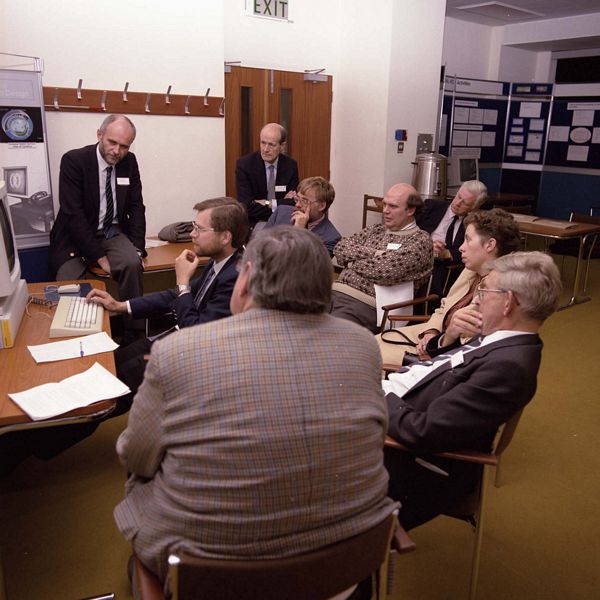
TOSCA was a pioneer in the use of finite element electromagnetic analysis techniques in three dimensions for the design of electrical equipment. Consequently the package was used extensively world wide by leading manufacturers, research laboratories and universities for the design of a wide range of devices from the smallest micromotor to the largest accelerator.
A set of individual magnets can be modelled, and the flow of particles then be tracked through the complete system. A selection of some of the design applications for which TOSCA can be used:
Optimal design of electrical equipment requires the use of analysis software dedicated to electromagnetics. Using TOSCA to simulate the fundamental electromagnetic performance of a design, the design engineer can evaluate alternative approaches easily and quickly with confidence at the concept stage. This reduces or can even eliminate the need for expensive and time consuming preproduction prototypes.
TOSCA uses a discrete finite element model in order to solve the partial differential equations governing the behavior of electromagnetic fields. The TOSCA method computes the total potential in the magnetic material and the reduced potential in the regions where source currents have been specified. The reduced potential represents only that portion of the field produced by magnetization, the remainder of the field being computed directly from source currents. By using this method TOSCA avoids the drawbacks of other methods which often produce cancellation errors. As a result, the accuracy of the TOSCA computation is far higher than alternative methods and is proven by over 20 years of comparison with measured results.
The magnetic material properties for TOSCA may be specified as non-linear, anisotropic or permanent magnet. The program uses an iterative solution technique for the matrix of linear simultaneous equations obtained for the potential at each node of the mesh, considerably reducing the memory requirements needed for a direct matrix solution algorithm. The TOSCA program employs a modified Newton-Raphson technique to successfully update the element permeabilities in order to obtain the fields with non-linear materials present.
The results from the program are created in a database for direct examination by the user. The analysis affords restart facilities which allows partially completed solutions to be restarted from the point at which they had previously stopped, additional results to be obtained without re-analyzing, and previous solutions to be exploited when solving a problem with the same geometry, but, for example, different material properties.
The TOSCA initially ran on IBM mainframe computers and Prime computers.
In 1985, infinite boundaries and anisotropic permeable materials were added to the TOSCA program. An example of the use of TOSCA to predict magnetic quadrupole gradients is given below.
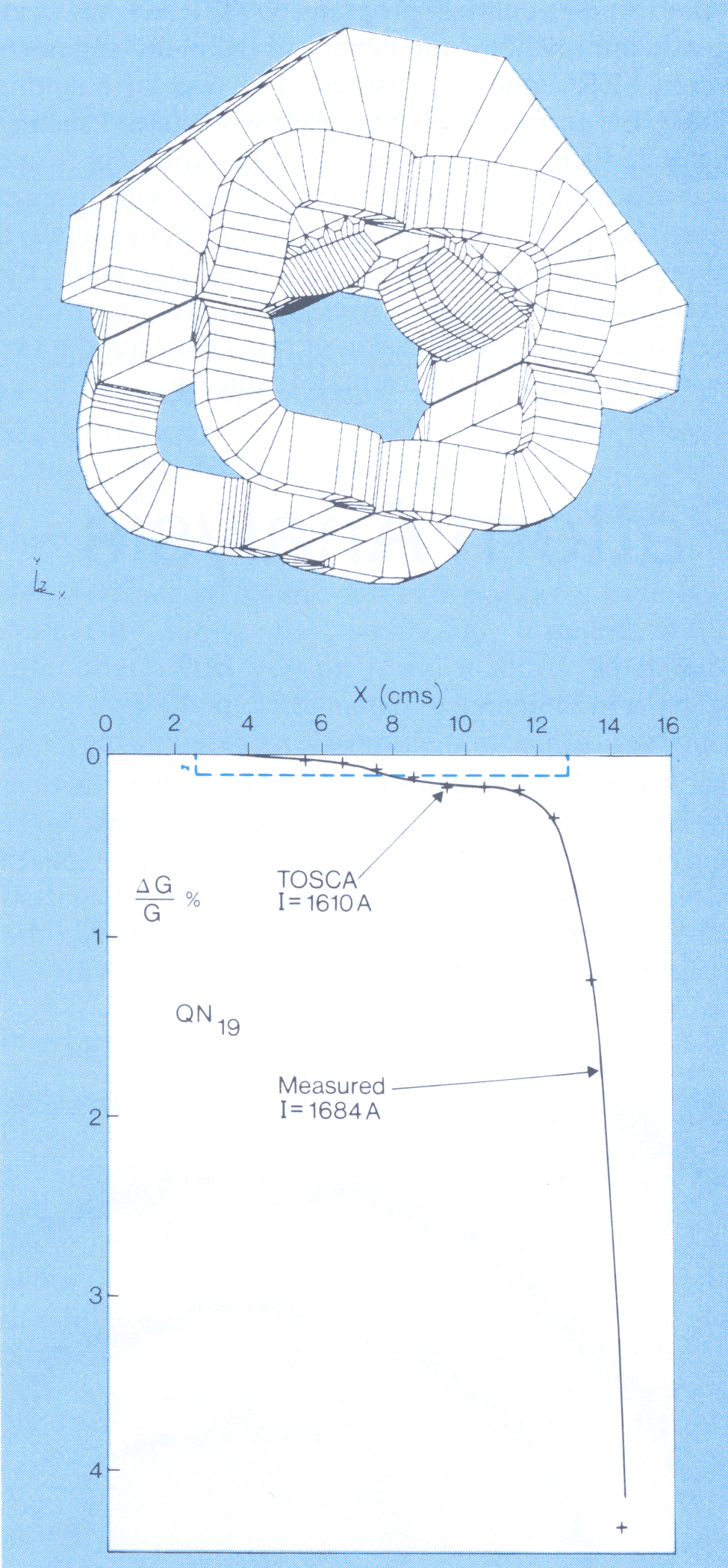
In 1986, TOSCA was mounted on the CRAY XMP by John Collie and Alan Mayhook. Some of the improvements in coding were also used to speed up the IBM version by about 30%. The solver module ran on the CRAY-XMP/48 at about 9 times the speed of the IBM in the solution of non-linear problems.
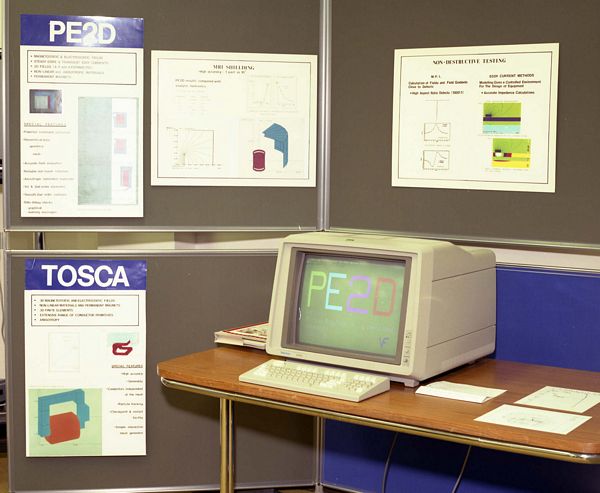
In 1988, Jim Diserens mounted TOSCA on the STELLAR GS1000, STELLAR GS2000 and ARDENT TITAN 1 as part of the EASE assessment of these superworkstations. Problems with the PHIGS graphics system on the STELLAR computers prevented a full implementation early on. On the GS2000,the solver ran 7 times slower than on the CRAY X-MP but 16 times faster than a SUN 3/140.
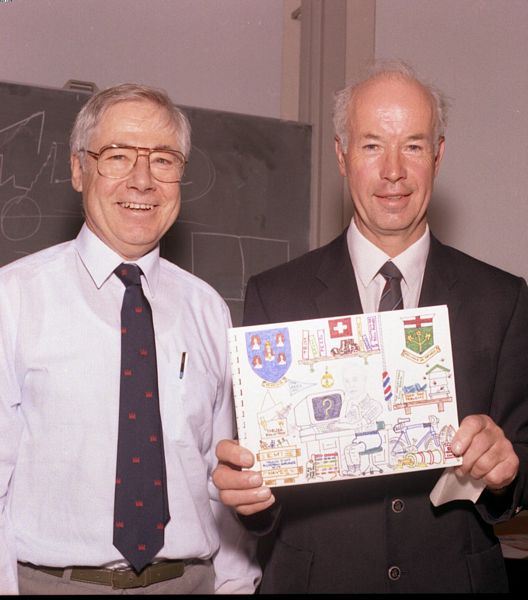
The following brochure gives details of one of the magnets designed using Tosca.
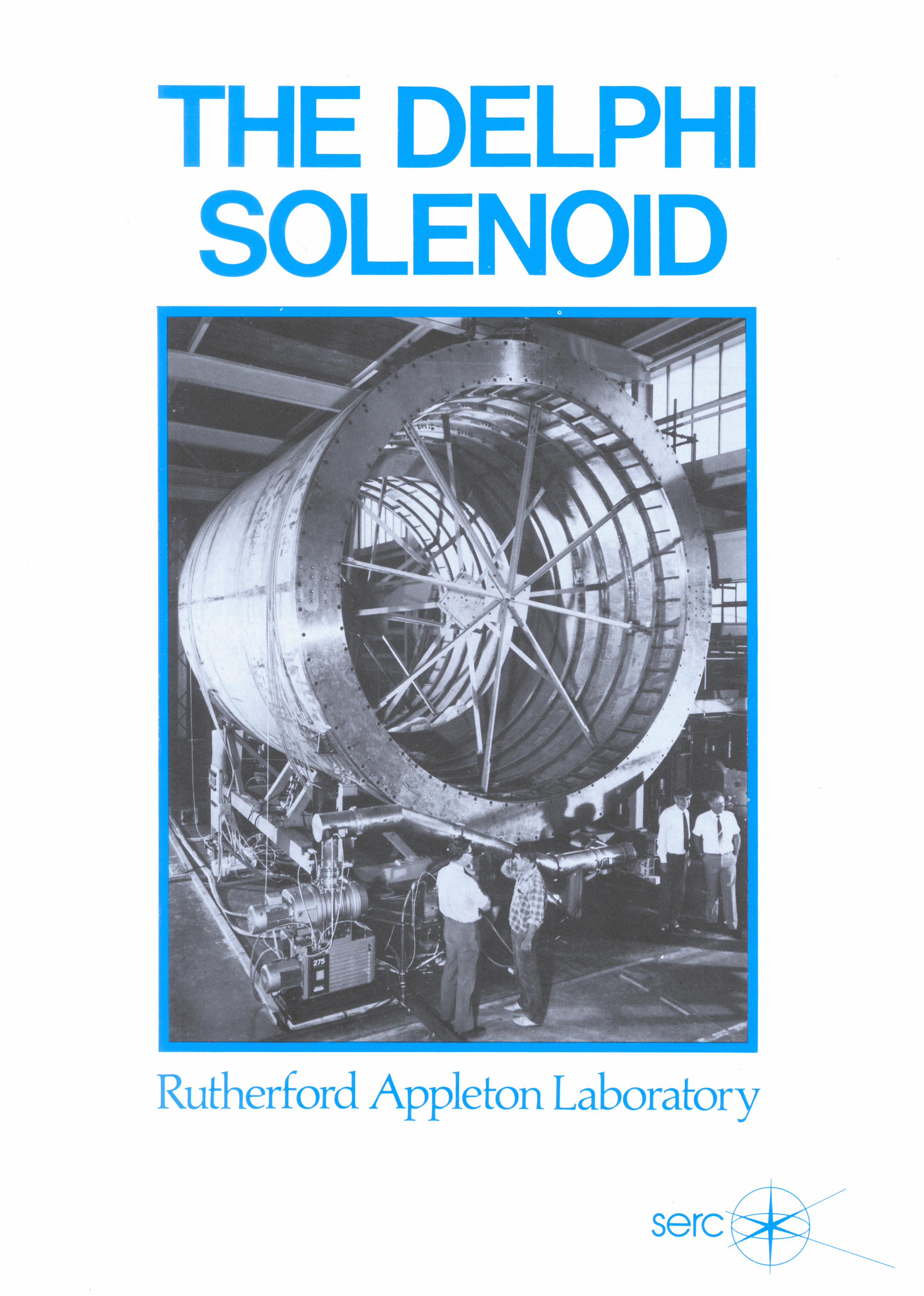
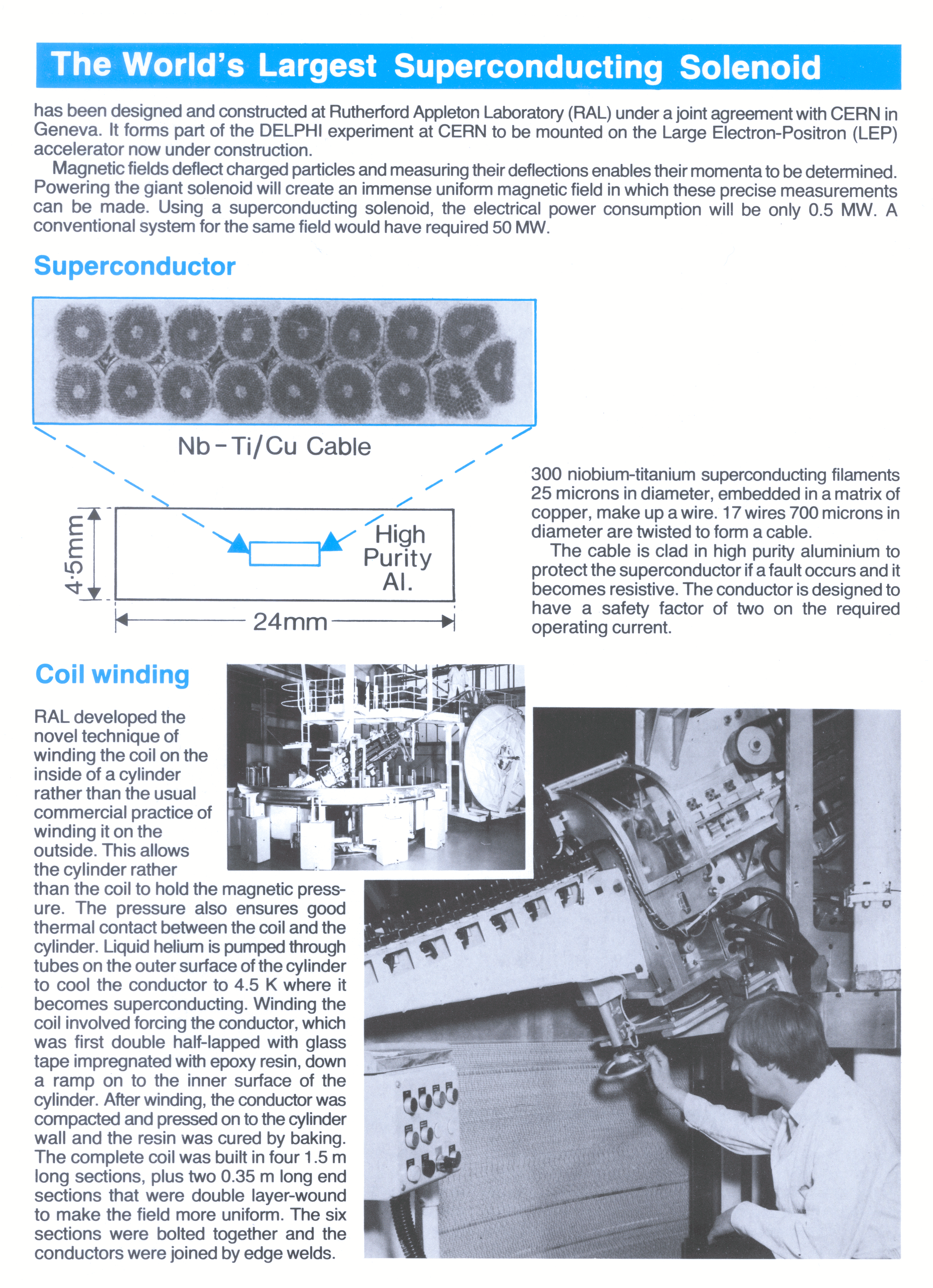
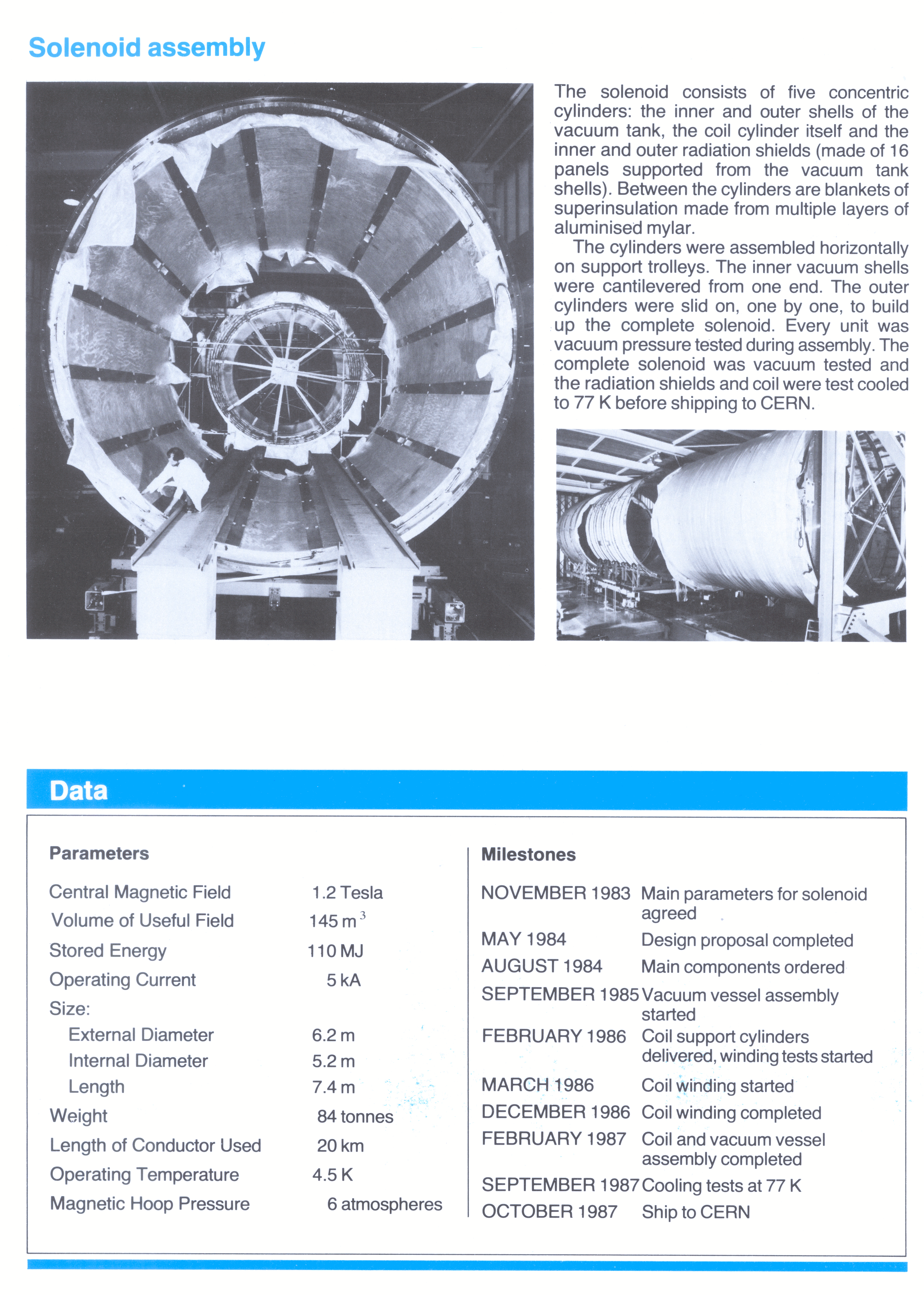
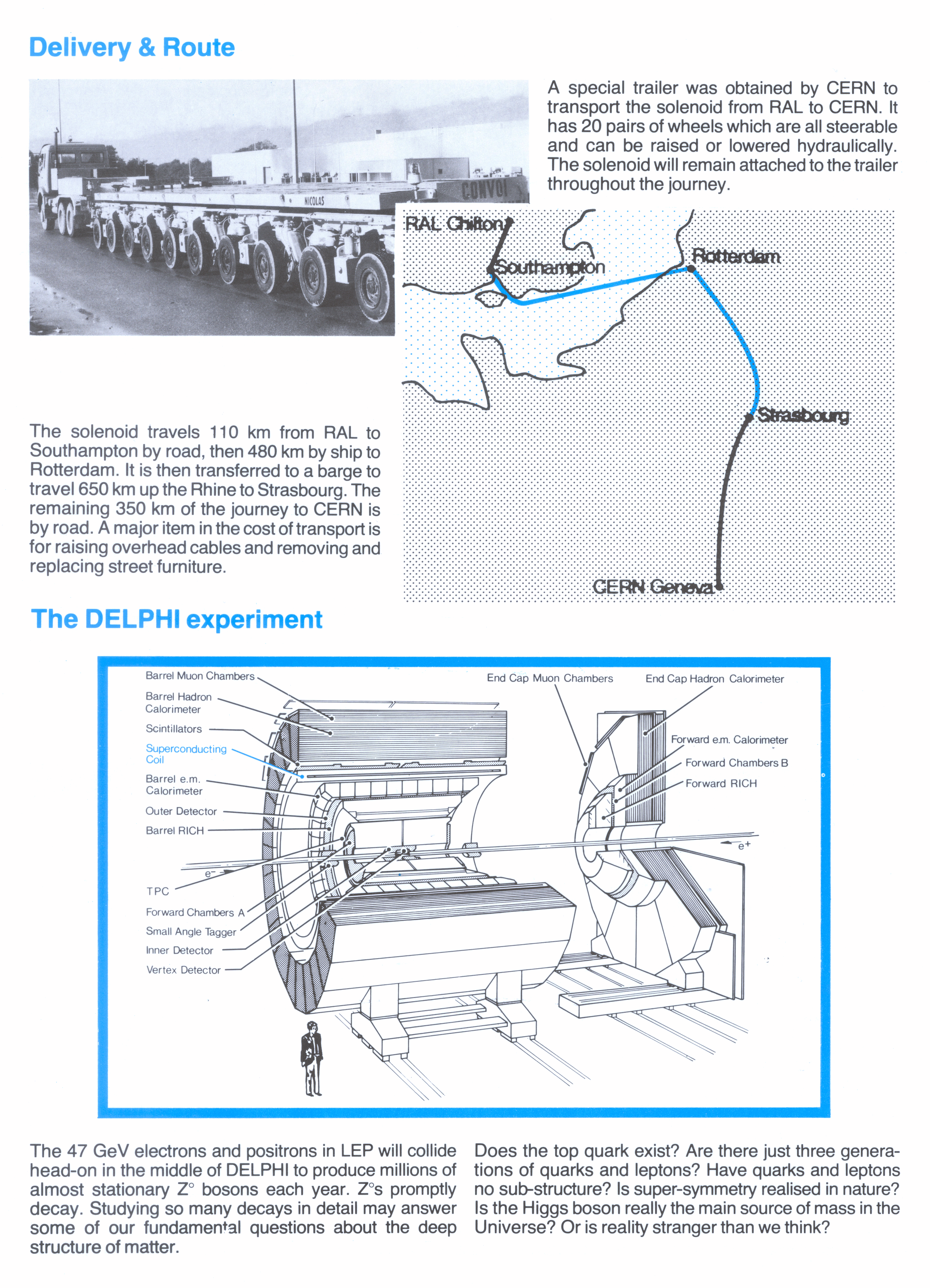
Saying 'Bon voyage' to the Delphi solenoid at a celebration party on Wednesday 14 October, 1987, Peter Glee, (Head, Engineering Division and Project Leader), took the opportunity to thank all who had worked on the project both physically and in supporting roles.
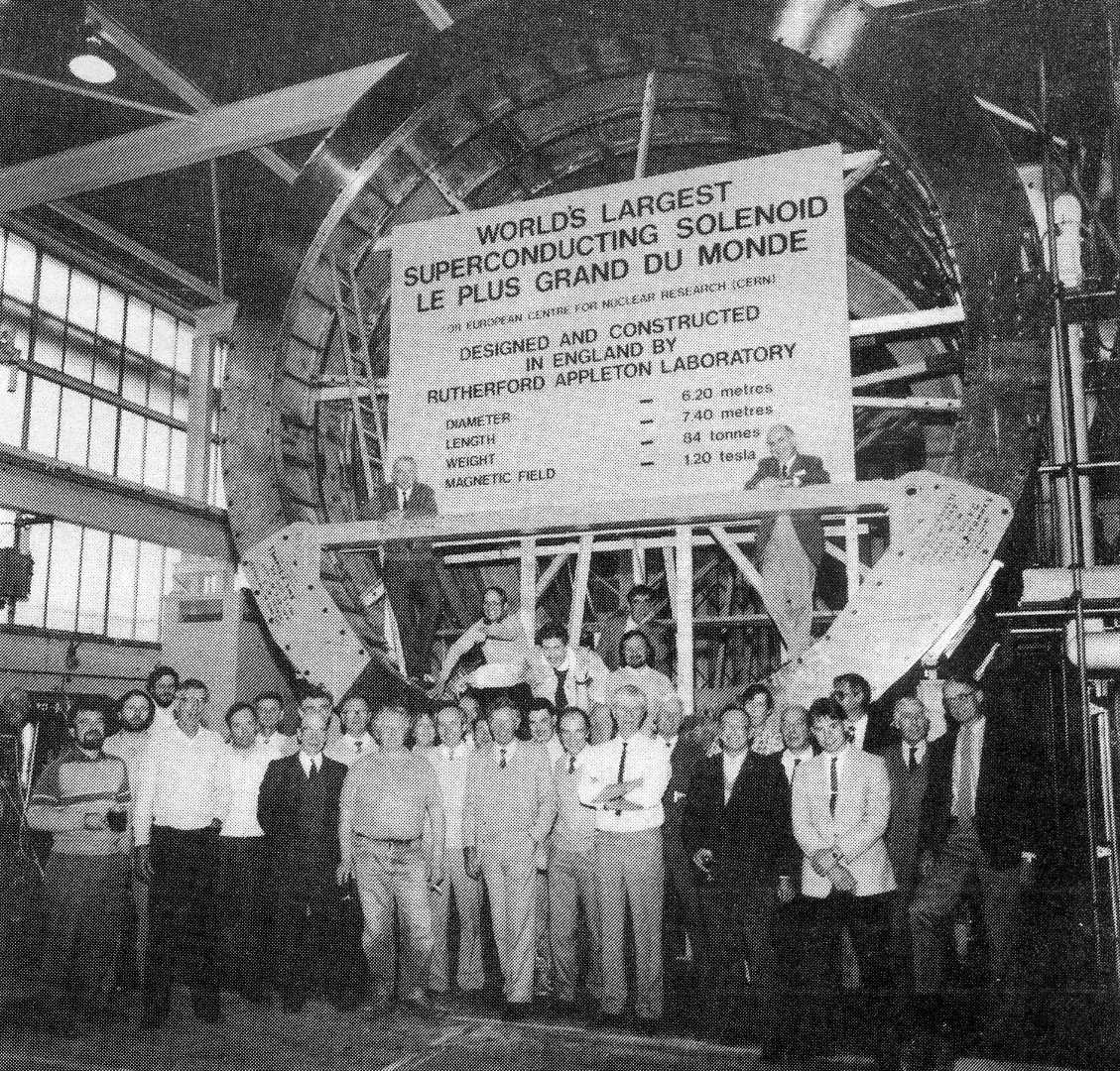
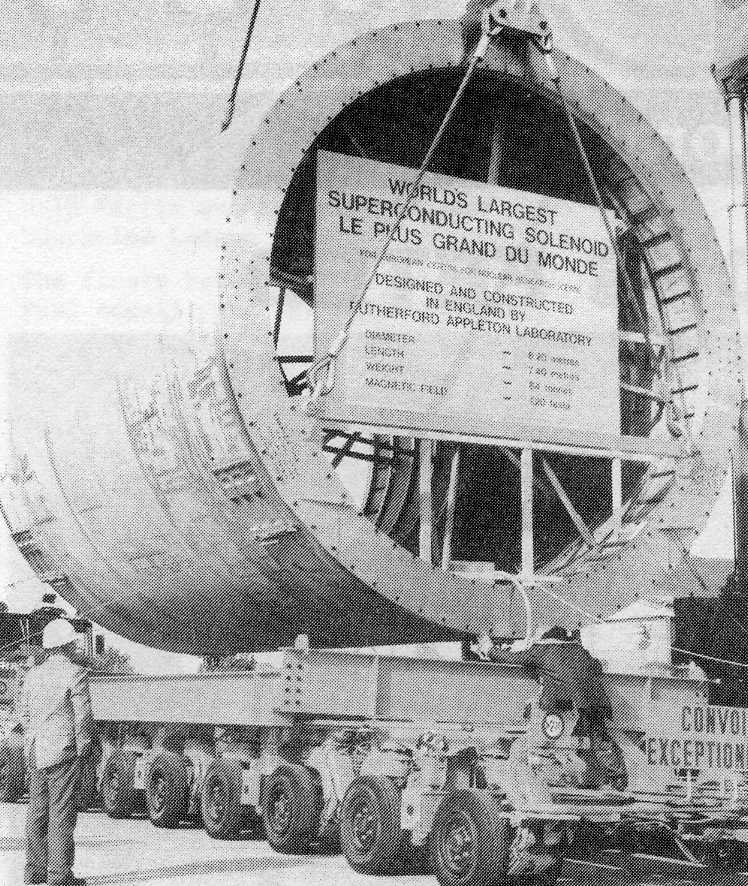
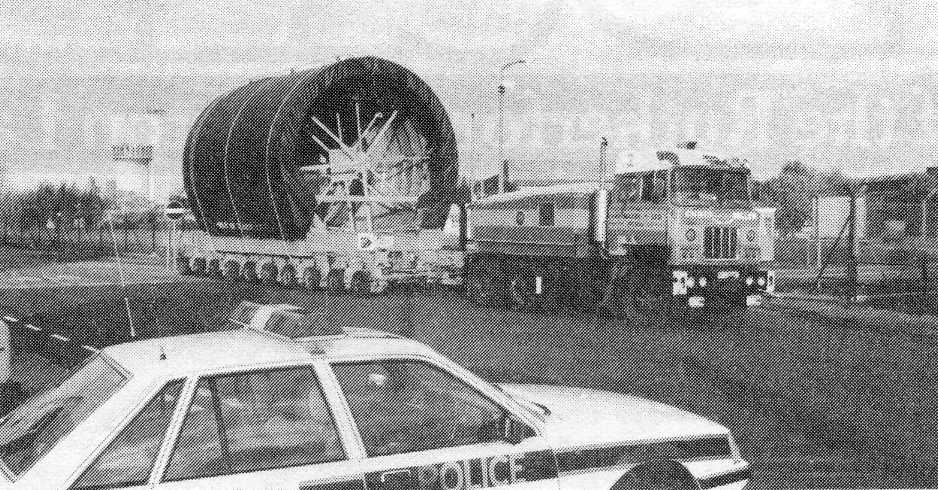
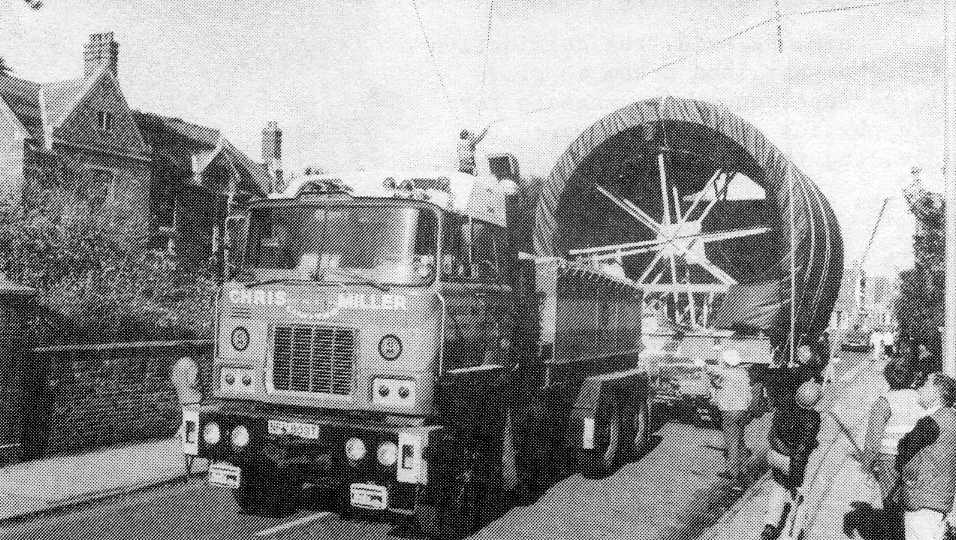
'It was for him, he said, the culmination of a fifteen year long dream to prove that large superconducting magnets for particle physics experiments were feasible, and that RAL could build them.
Through the 60s and 70s when the original work on superconducting materials began at RAL; John Wilkins had the vision to release resources enabling Peter Smith and Martin Wilson et al to develop the techniques leading to this tremendous achievement. The superconducting cable, known world-wide as Rutherford cable had been developed at the Laboratory.
This expertise and the magnet design computer programs of Bill Trowbridge and his team have been of immense value to the project. The efforts of advocates like Geoff Manning and the Solenoid teams presenting the proposals to CERN had convinced them that RAL could build the solenoid. A great debt of gratitude is owed to them all.
"The Laboratory can be justly proud of this achievement and I thank you all again for seeing the job through long hours, many frustrations and a tight time schedule," he said.
Representing CERN, Bans Hilke expressed pleasure and gratitude for the completion of this immense project of novel design. He realised that it had not been easy to satisfy the critical demands of CERN and they were grateful for the toleration with which RAL had treated the CERN contingent.
"We are confident", he said, "that your work will play an essential part in the successful outcome of the Delphi experiment".
RAL's Director Paul Williams added his congratulations and thanks to the solenoid team and especially to Peter Clee, and relayed messages of congratulation from Saclay and Oxford Instruments.
On Sunday 18 October the RAL built Delphi Solenoid left the Laboratory just after dawn to begin its long journey to CERN.
The largest superconducting solenoid in the world, which when loaded onto its trailer measures 6.2 metres (20' 6") wide x 6.8 m (22' 6") high x 14 m (45' 6") long and weighs 115 tonnes is not the sort of load for a quick slip down to the coast.
From the earliest days of the project, plans for the journey have been in hand, firstly with CERN's transport consultants and later in collaboration with the UK company Projector Transport Engineering Ltd. Establishing the road routes through England and France has alone taken over a year of careful planning and investigation.
Initial studies led to the acquisition by CERN of the specially constructed 40 wheel hydraulic trailer. Onto this, at RAL, the completed solenoid was lifted by a 300 tonne telescopic mobile crane, (quite a monster in itself) before being hitched to an impressive 306 h.p. Mack heavy haulage tractor.
Christened "Bonzo Bear", this remarkable vehicle was previously used on the CEGB's Dinorwic underground power station project where it hauled the massive turbine generators under the North Wales mountains.
Bonzo Bear is capable of hauling a 200 tonne payload up a 13% gradient but just to be sure a second push tractor was standing by for the steep climb over the Berkshire Downs out of Wantage. But before that, in Wantage itself, the St Mary's School footbridge had to be removed to allow the cavalcade access to the Wantage - Hungerford road.
By 9.30 am on Sunday morning Wantage was crowded with RAL personnel waiting to cheer the convoy on its tortuous way, though there was a slight melting into the background when it was rumoured that the beer pumps of the town's Comrades Club had been put out of action by the accidental removal of a power cable.
The storms of the previous days didn't help progress. Though the overhead cables through Wantage were still there, staff to lift them for the solenoids' passage were necessarily thin on the ground and the journey out of Wantage was painfully slow. By midnight the load had reached Stockcross outside Newbury having negotiated Great Shefford and the fly-over on the B4000.
On Tuesday the solenoid should have reached Southampton, but again the ravages of storm "Mike" upset the plans and at the time of writing it looks as though the ship onto which it should have been loaded, will have sailed. Never-the-less the load will eventually set sail for Rotterdam where one of the port's 1000 tonne floating cranes will transfer the trailer with the solenoid onto a Rhine lighter for its voyage through Europe's inland waterways to Strasbourg.
Returned to terra firma for the final phase of its difficult journey, the solenoid will be jointly pushed and pulled by two giant French tractors through Dole (birthplace of Pasteur) climbing into the Jura Mountains and over the Col de la Faucille to Geneva.
When it will arrive is now in the lap of the gods. The perfidious English weather has played havoc with the time table and a sprinkling of snow has already been felt in the Juras. Heaven help the drivers in weather life this!